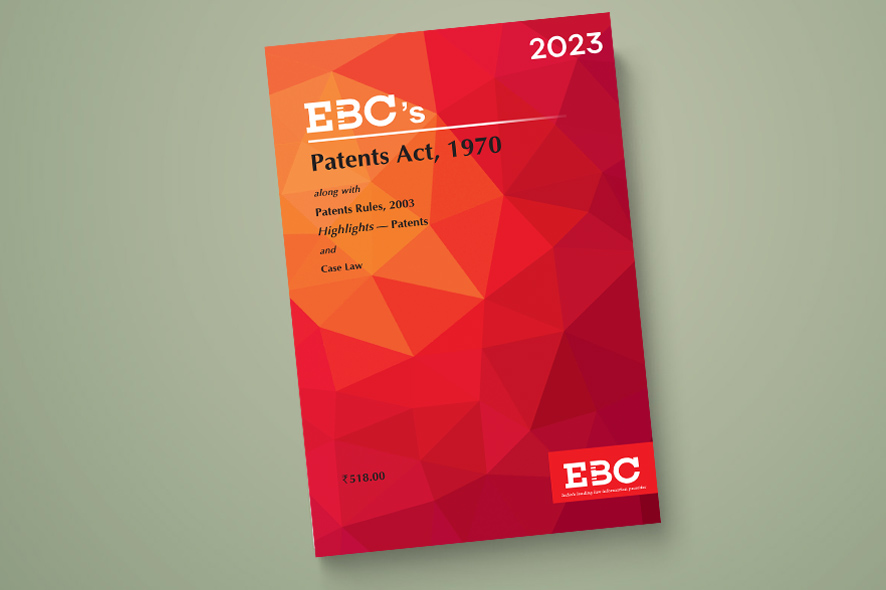Madras High Court: In an appeal against the order passed by the Patent Office, wherein it rejected the application of the appellant under Section 3(c) of the Patents Act, 1970 (‘Act’), Senthilkumar Ramamoorthy J. while setting aside the impugned order, said that as the antibody was generated by injecting an engineered antigen into the mice, and the material extracted from the inguinal lymph of the mice was fused with myeloma cells by the hybridoma process which resulted in the antibody over which the patent claim is made. Thus, the claimed invention does not exclude patent protection as per Section 3 of the Act.
Background
The Patent Application was filed by the appellant, seeking patent protection for their invention, “Antibody Capable of Binding Specifically to A-beta Oligomer and Use Thereof”. The respondent objected to this application through the First Examination Report (‘FER’), claiming the ineligibility of patent protection for the submitted application under Section 3 of the Act.
The appellant responded to the FER and claimed that the antibody for application was not naturally occurring and is not found in nature, refuting the respondent’s objections in the FER. However, the respondent confirmed Section 3(c) objection, holding that the antibody with its specific chemical sequence, is an inherent feature and does not distinguish it from those that occur in nature. It was further claimed that the antibody in question was discovered, and therefore, not patent eligible. Thereby, the claimed invention was rejected under Section 3(c) of the Act.
Analysis and Judgment
The Court attempted to explain the intended meaning of the language of Section 3 of the Act. First, the Court said that the word “mere” has been added before the word “discovery” to refer to only something that is beyond the discovery of a scientific principle, could be patentable.
Thus, the qualifier “mere” is confined to the nearest reasonable referent “discovery of a scientific principle” and does not extend to “the discovery of any living thing or non-living substance occurring in nature.”
Second, the Court elucidated the expression “occurring in nature” does not include “living things”, since that would create a redundancy not attributable to the Parliament. Therefore, on this point, the Court concluded that, “occurring in nature” in the third limb of Section 3(c) only qualifies the nearest reasonable referent “non-living substance”.
Enunciating further on this matter, the Court also examined the judgments of the US Supreme Court. Amongst those, Sidney A. Diamond v. Ananda M. Chakrabarty, 1980 SCC OnLine US SC 128 was in great emphasis. The man-made bacterium in that case was held to be patent-eligible.
Further examined was the case of Association for Molecular Pathology et al v. Myriad Genetics et al, 133 S.Ct. 2107 (2013), concluding that a claimed invention for discovery of two human genes was patent ineligible, however, a synthetically created cDNA was held to be patent eligible.
Therefore, the Court concluded that redundancy should not be imputed to Parliament, and that the expression “occurring in nature” should not be robbed of all meaning and purpose. Further, it said that it should not be lost sight that Section 3(c) is confined to patent exclusions or ineligibility and passing through such filter does not guarantee the grant of patent.
The Court remarked that the real challenge with a patent application in respect of a synthesized non-living substance is establishing novelty, technical advance and not patent eligibility.
After perusing the complete specification, the Court said that the antibody of the claimed invention was undoubtedly not isolated from a human being, but was engineered in the manner described in the complete specification.
Concerning the contention of the respondent that the claims are in respect of the discovery of an antibody/non-living substance occurring in nature, the Court said that it cannot be countenanced merely because the organism specified in the sequence listing is homo sapiens. Such conclusion would be justified only if the appellant had discovered/found a hitherto unknown antibody and isolated it from nature.
The Court further noted that the antibody was generated by injecting an engineered antigen into the mice. After doing so, material extracted from the inguinal lymph of the mice was fused with myeloma cells by the hybridoma process. This resulted in the antibody over which the patent claim is made. Thus, the Court held that the claimed invention does not exclude patent protection as per Section 3 of the Act.
Therefore, the Court set aside the impugned order, and directed that the claimed invention be granted patent protection.
[Immunas Pharma, Inc v. Assistant Controller of Patents and Design (T), 2024 SCC OnLine Mad 480, decided on 06-03-2024]
Advocates who appeared in this case :
For the Appellant: Senior Advocate P.V. Balasubramaniam
For the Respondent: SPC N. Vijayaraman








